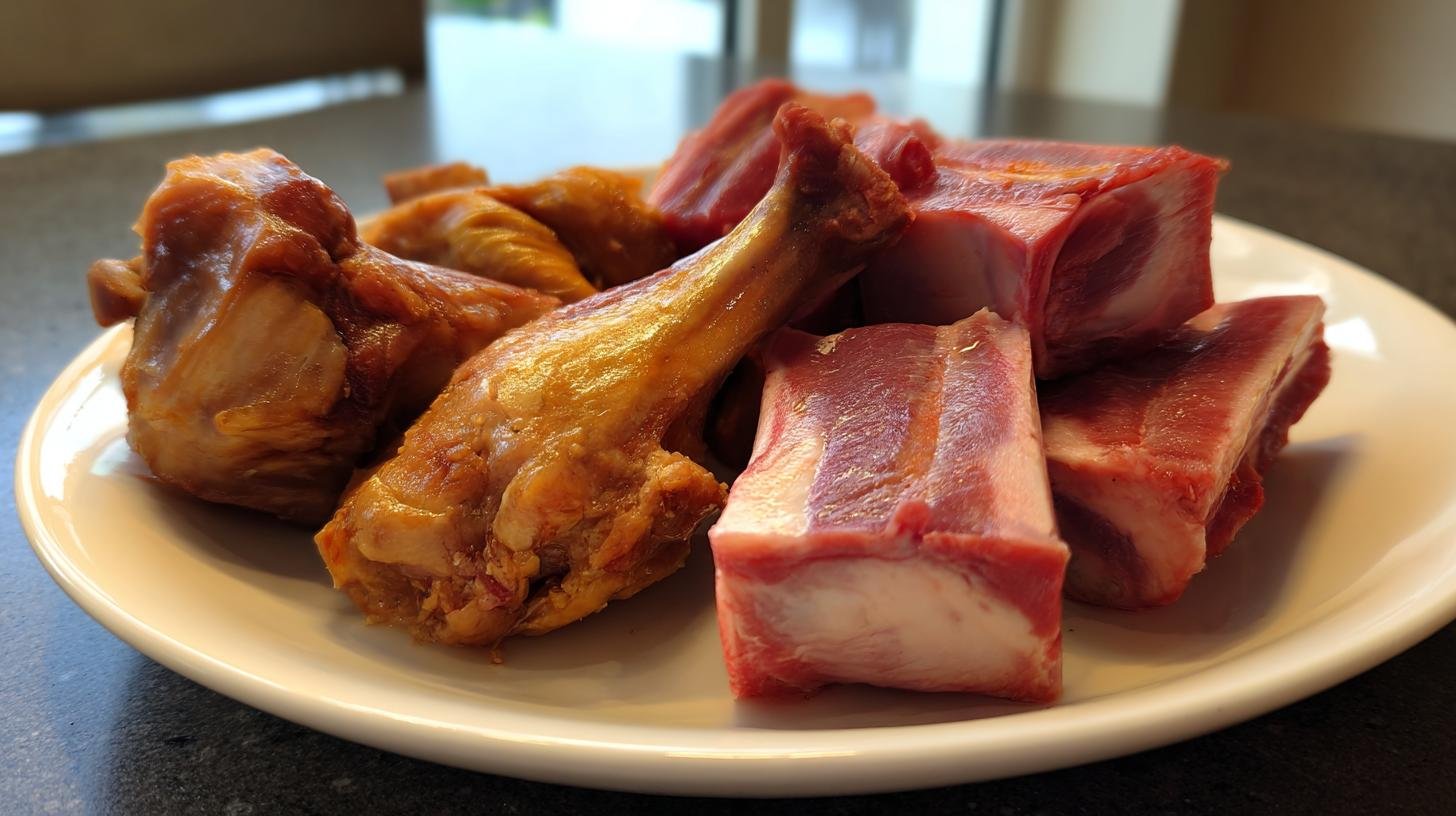There’s nothing quite like the sound of my dog gnawing happily away on a fresh raw bone—it’s like music to a dog person’s ears. Raw meaty bones for dogs aren’t just a treat; they tap into something primal. Dogs are natural chewers, and giving them the right kind of bone helps satisfy that deep instinct while also promoting better dental health (hello, cleaner teeth and fresher breath!).
I started feeding raw bones years ago after my vet recommended them for my senior dog’s tartar buildup. Not only did it help his teeth, but he was calmer and more content after a good chew session. Ever since, I’ve made raw meaty bones a regular part of our dogs’ diet—and I’ve picked up a few tricks to keep things safe and mess-free.
In this guide, I’ll walk you through the exact bones I use, how to serve them safely, and why they’re such a great addition to a natural, species-appropriate diet. Trust me, your pup will thank you—with tail wags and sparkly clean teeth.
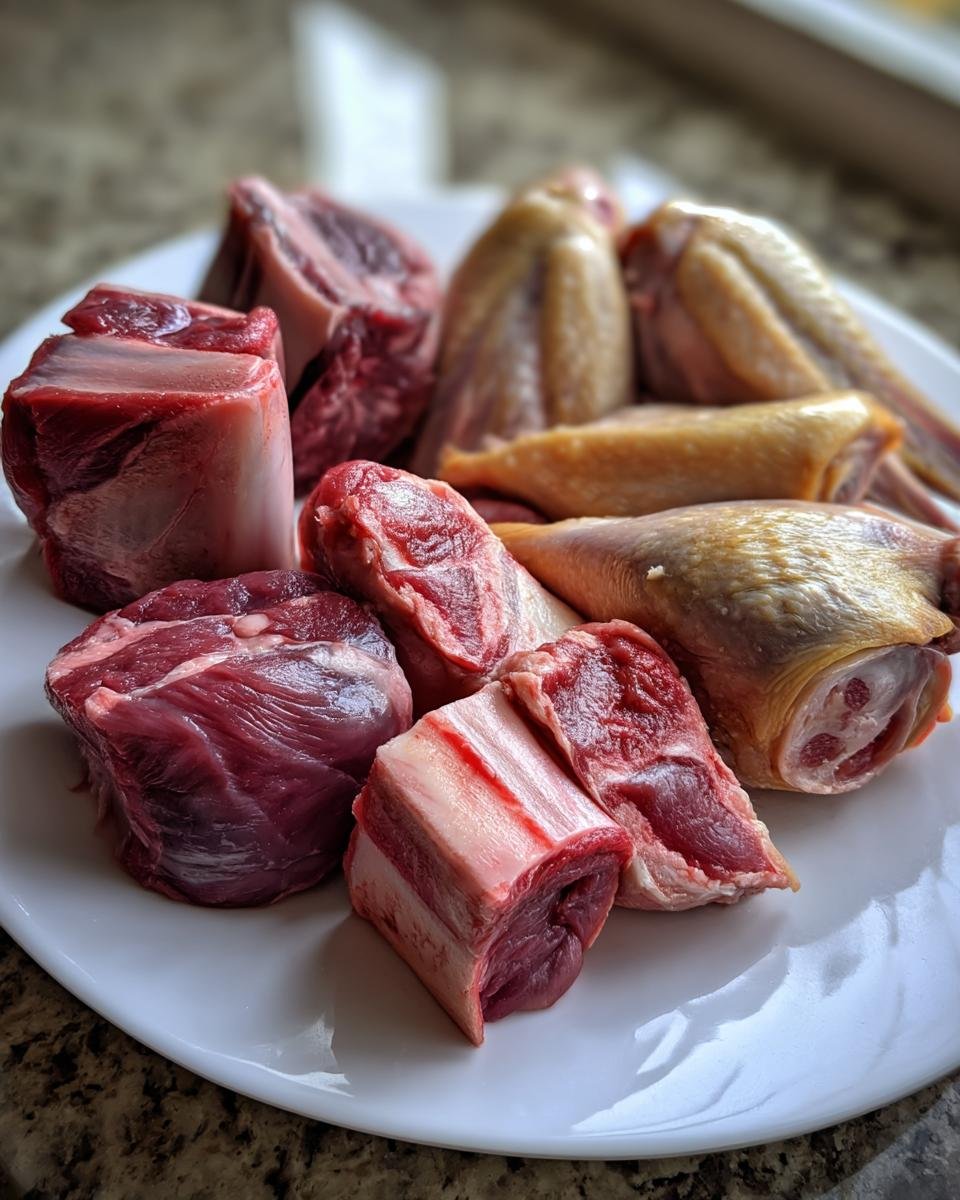
Ingredients for Raw Meaty Bones for Dogs
When it comes to raw meaty bones for dogs, the key is picking the right size and type for your pup’s breed and chewing habits. Always use raw, never cooked, and I like to freeze mine for 48 hours first—just to play it safe with bacteria.
- 1–2 raw beef marrow bones – great for medium to large breeds; make sure they’re big enough that your dog can’t swallow them whole.
- 1–2 raw chicken necks or wings – perfect for small dogs or beginners; softer and easier to chew.
- 1 raw lamb shank – denser bone for strong chewers; ideal for large dogs who love a challenge.
- 1 raw turkey neck (optional) – a nice change-up for medium to large dogs; lots of cartilage and crunch.
All bones should be uncooked, fresh or frozen, and size-appropriate. If you’re unsure, always go bigger—it’s safer and more satisfying for your pup!
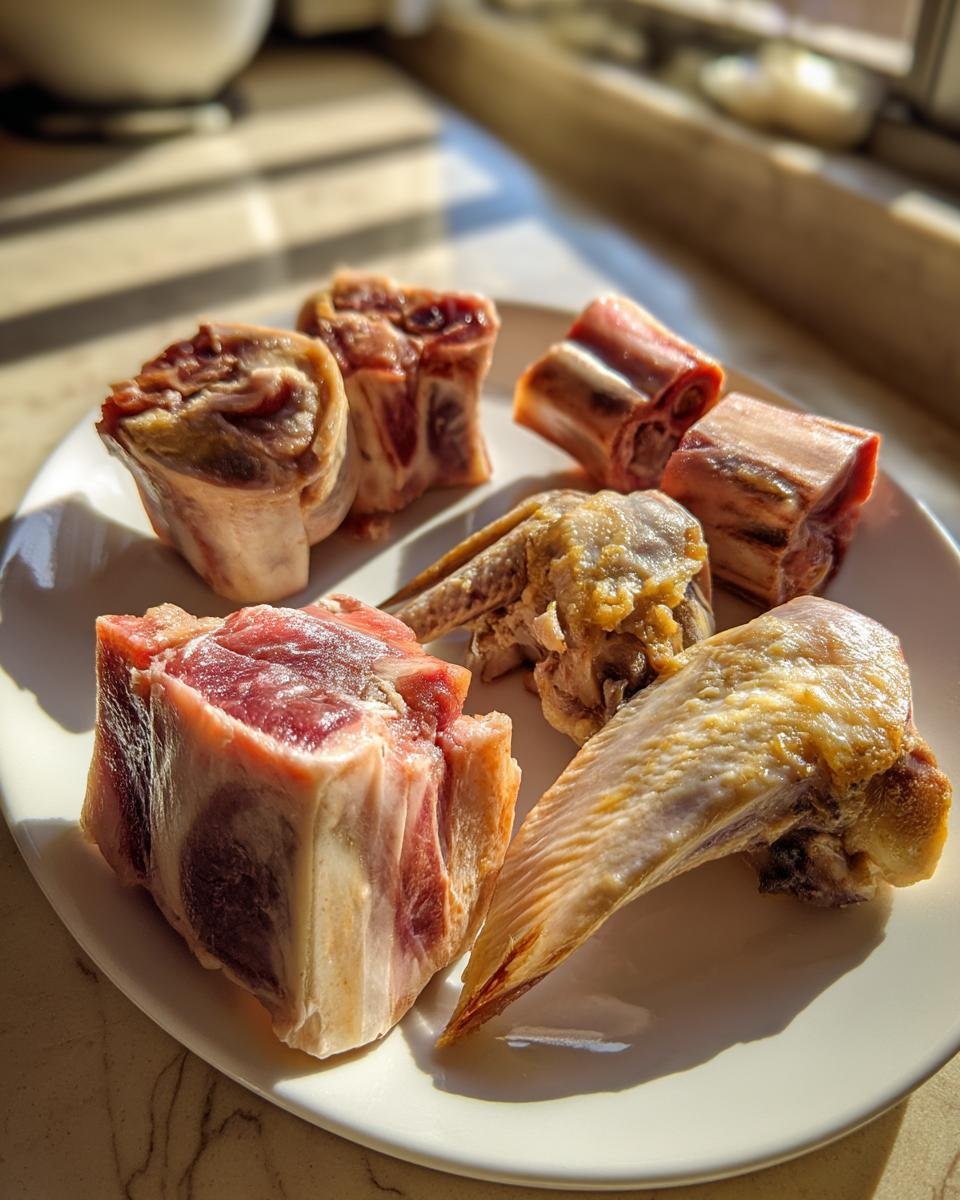
How to Prepare Raw Meaty Bones for Dogs
Getting raw meaty bones ready for your pup is super simple, but there are a few important steps that make all the difference—especially when it comes to safety and keeping things clean (trust me, I’ve learned the hard way!). Here’s exactly how I do it:
- Pick the right bone for your dog. Match the bone size and density to your dog’s breed, age, and chewing style. Bigger, denser bones like lamb shanks or marrow bones are best for large dogs. Chicken necks or wings are better for small dogs or those just starting out.
- Freeze the bone for 48 hours. I always freeze raw bones before feeding to help kill off any surface bacteria. It’s an easy food safety step that adds peace of mind.
- Rinse under cold water and pat dry. This helps remove any stray bone dust or packaging residue.
- Serve in a designated feeding spot. I use a towel or washable mat to contain any mess. It keeps cleanup easy and your floors clean.
- Supervise your dog at all times. Do not leave your dog unattended while chewing. I usually limit chewing to 20–30 minutes, or until the bone gets small enough to be a choking risk.
- Store leftovers in the fridge. If there’s a chunk left, pop it in an airtight container and refrigerate for up to 3 days.
That’s it! With a little prep and close supervision, raw meaty bones can be a safe and rewarding treat your dog will love.
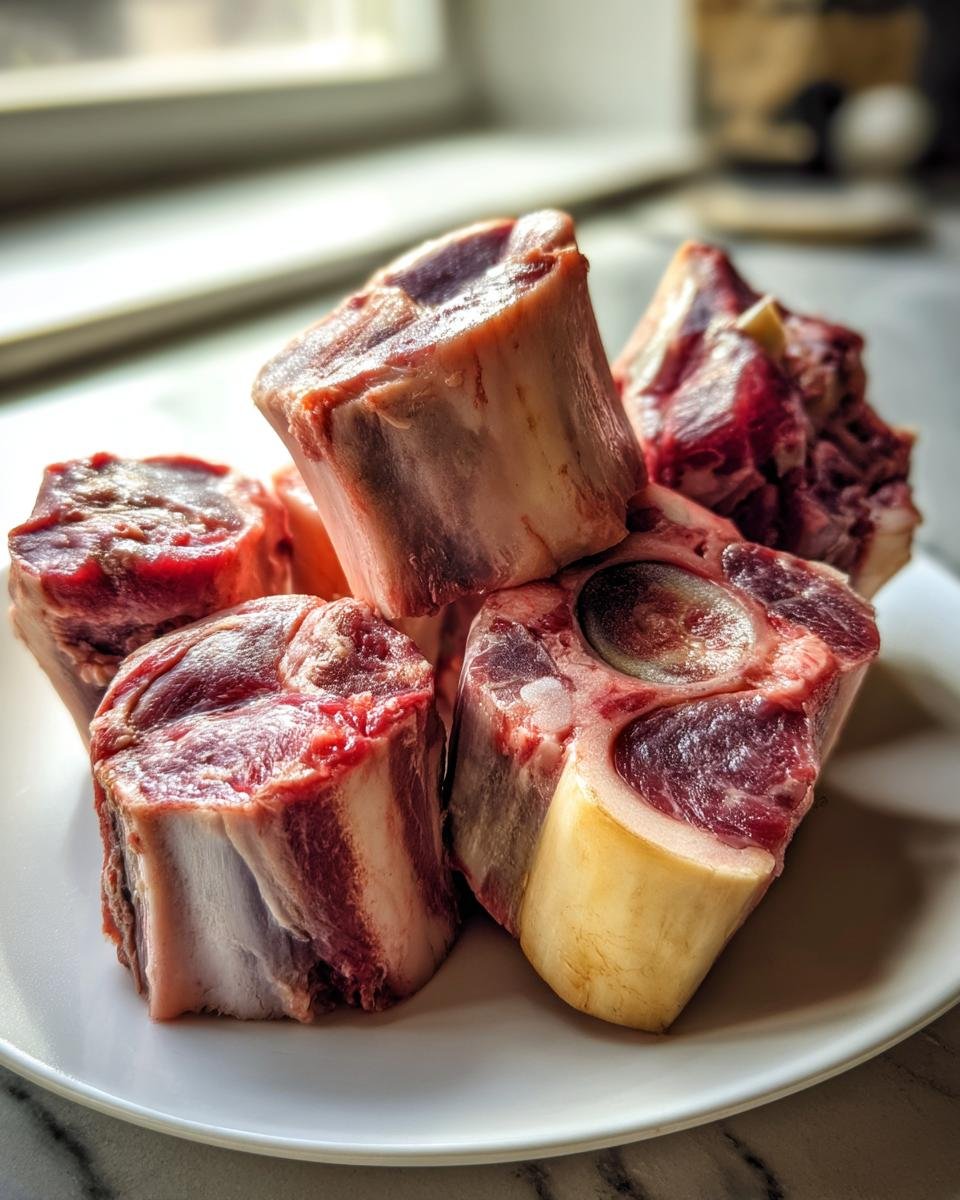
Why Raw Meaty Bones for Dogs Are Beneficial
There’s a reason raw meaty bones for dogs have become such a popular part of raw feeding—it’s not just about keeping them busy (though that’s a nice bonus!). These bones offer real, tangible health benefits that I’ve seen firsthand in my own pups. According to many holistic vets and raw feeding experts, they support a dog’s overall well-being in several ways:
- Dental health: Chewing on raw bones helps scrape away plaque and tartar naturally. It’s like a toothbrush and floss in one—without the minty flavor, of course.
- Nutrition: Bones are packed with minerals like calcium and phosphorus, along with marrow and connective tissue that provide healthy fats and joint-supporting collagen.
- Mental stimulation: The act of chewing satisfies a dog’s natural instincts and helps relieve boredom or anxiety. A good bone can keep them happily occupied for quite a while.
- Species-appropriate diet: Raw meaty bones mimic what dogs would eat in the wild. They’re a natural, unprocessed way to nourish your pup—just as nature intended.
Honestly, once I saw the difference in my dogs’ teeth and energy, there was no going back. It’s one of the simplest things you can do for their health and happiness.
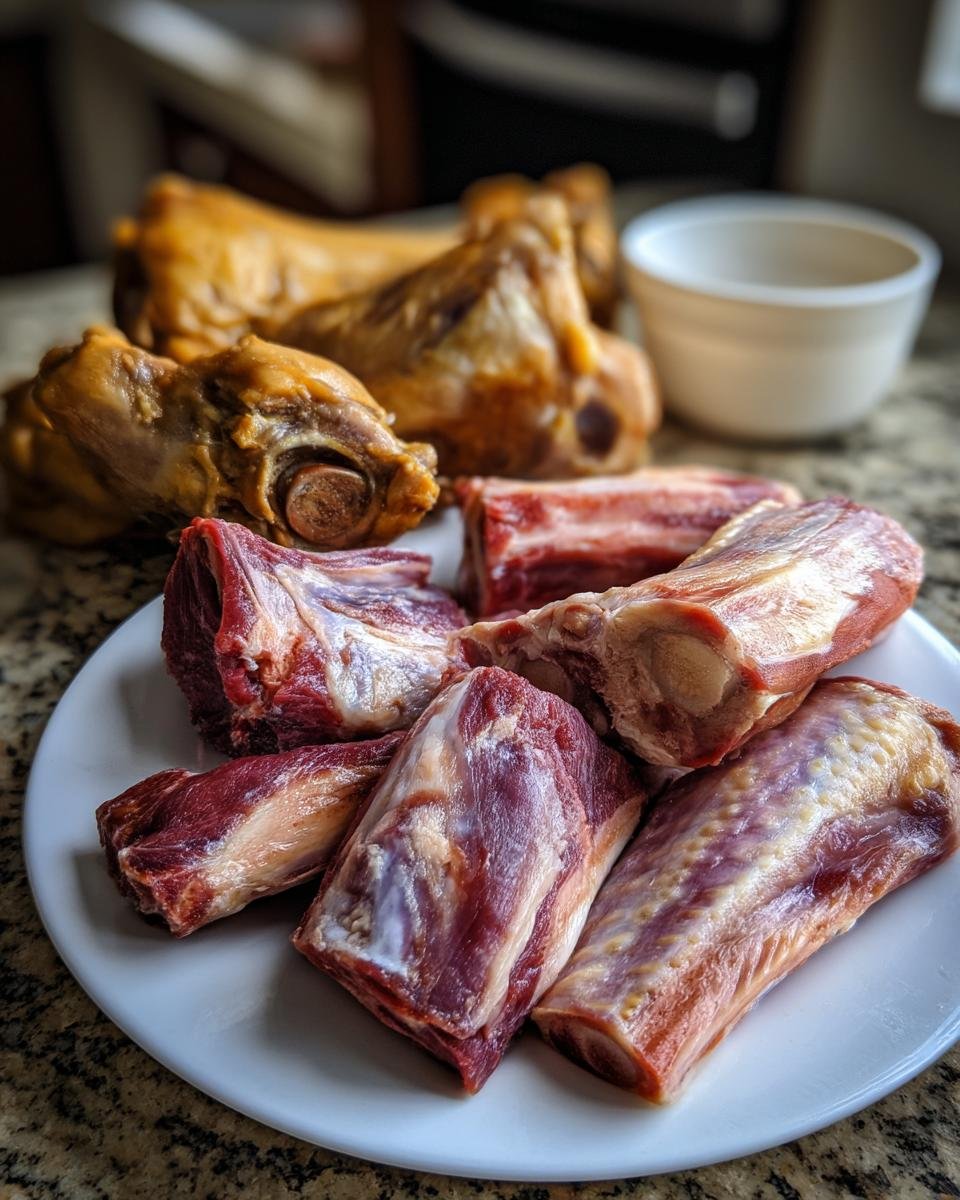
Tips for Feeding Raw Meaty Bones for Dogs Safely
Feeding raw meaty bones is one of my favorite ways to treat my dogs—but safety always comes first. Here are my go-to tips to make sure every chew session is safe, clean, and enjoyable for both of you:
- Always supervise. Don’t walk away. Stay close and keep an eye on how your dog is chewing, especially if it’s their first time.
- Freeze bones for 48 hours before serving to reduce bacteria and slow down enthusiastic chewers.
- Choose the right size. A bone should be big enough that your dog can’t try to gulp it down—bigger really is better here.
- Watch for signs of aggressive chewing like frantic gnawing or trying to break the bone in half—time to take it away if that happens.
- Limit bone time to 20–30 minutes per session to avoid tooth wear or tummy trouble.
- Feed 1–2 times per week as part of a balanced raw or whole-food diet.
Trust your gut. If something feels off, it’s okay to take the bone away. Your dog’s safety is always the priority.
Ingredient Notes and Substitutions
Not all raw meaty bones are created equal, and choosing the right one makes a big difference. Marrow bones are dense and rich—great for large dogs who love a long chew, but they can be too hard for smaller breeds or dogs with dental issues. Chicken necks or wings are soft, flexible, and perfect for toy breeds or beginners. They’re also a good option if your dog has trouble with heavier bones.
Lamb shanks are my go-to for strong chewers—they’re tough but not too thick, and they’ve got a nice mix of meat and bone. Turkey necks fall somewhere in the middle and are great for variety. If your pup has a poultry allergy, try rabbit bones or duck necks instead.
Always freeze bones for 48 hours before feeding, and rinse them under cold water before serving. That little bit of prep goes a long way in keeping things safe and clean!
FAQ About Raw Meaty Bones for Dogs
Over the years, I’ve had lots of questions from fellow dog parents about raw meaty bones—especially when they’re just starting out with raw feeding. Here are some of the most common ones I get, along with what I’ve learned from experience (and a few vet chats!).
Can puppies eat raw meaty bones?
Yes—but with care! Puppies can benefit from raw bones as part of a natural dog diet, especially for teething. Start with softer options like chicken necks or wings, and always supervise. Make sure the bone is sized appropriately to avoid any choking risk.
How often should I feed raw bones?
I usually offer raw meaty bones 1–2 times per week. It’s the perfect balance for supporting dog dental health without overloading their digestive system. Every dog is different, though, so watch how yours reacts and adjust as needed.
What if my dog swallows a bone?
First—don’t panic. If it was raw and not too large or splintery, it might pass just fine. But call your vet immediately if your dog shows signs of distress: vomiting, gagging, or unusual behavior. This is why supervision is so important!
Are certain bones safer than others?
Absolutely. Raw, non-weight-bearing bones (like necks and wings) are softer and safer for most dogs. Avoid cooked bones entirely, and even raw marrow bones can be too hard for small dogs or aggressive chewers. Match the bone to your dog’s size and style.
Can raw bones cause digestive issues?
Sometimes, yes—especially if your dog isn’t used to them. Start slow, offer on an empty stomach, and limit chewing time. If you notice loose stools or discomfort, take a break and consult your vet before trying again.
Storage and Handling Guidelines
Raw bones are a treat, but they definitely come with some handling rules. I always store unused bones in an airtight container in the fridge for up to 3 days—any longer and I move them to the freezer. Frozen bones can stay good for a few months, just make sure they’re sealed well to avoid freezer burn.
To keep things safe, I treat raw bones like raw meat. I wash my hands, clean any surfaces they touch, and use a separate cutting board. Cross-contamination is no joke, especially if you’ve got kids or other pets around.
Once your dog is done chewing, toss the bone if it’s small enough to swallow or starting to splinter. Trust me, it’s not worth the risk. I wrap used bones in paper towels and seal them in a bag before throwing them out—less odor, less mess.
Nutritional Information
The nutrition in raw meaty bones can vary a lot depending on the type and size of the bone. For example, a beef marrow bone is richer in fat, while a chicken neck has more protein and cartilage. On average, a single raw bone (about 4–6 oz) might contain:
- Calories: 150–300 (depending on fat content)
- Protein: 10–20g
- Fat: 8–25g
- Carbohydrates: 0g
- Fiber: 0g
These numbers are just ballpark estimates—not lab-tested results. Bone composition varies, but the key takeaway is: raw bones are a great natural source of protein, healthy fats, and minerals like calcium and phosphorus.
Share Your Experience With Raw Meaty Bones for Dogs
I’d love to hear how it went! Did your pup go wild for their first raw bone? Leave a comment below and tell me what kind of bone you used and how your dog reacted. Got a tip or trick that works in your household? Share that too! I read every comment, and your questions might help another dog parent just getting started. Let’s swap stories and keep those tails wagging!
Print
Raw meaty bones for dogs: 3 dangers every owner must know
- Total Time: 5 minutes
- Yield: 1 serving 1x
- Diet: Gluten Free
Description
Raw meaty bones provide dogs with essential nutrients, promote dental health, and satisfy natural chewing instincts. Always supervise your dog during feeding to ensure safety.
Ingredients
- 1–2 raw beef marrow bones (size appropriate for your dog’s breed)
- 1–2 raw chicken necks or wings (for smaller dogs)
- 1 raw lamb shank (for larger dogs)
- 1 raw turkey neck (optional)
Instructions
- Select bones sized appropriately for your dog’s weight and chewing style.
- Rinse bones under cold water and pat dry with paper towels.
- Offer the bone to your dog in a designated feeding area.
- Discard bones after 20-30 minutes of chewing or if they become small enough to swallow.
- Store unused bones in an airtight container in the refrigerator for up to 3 days.
Notes
- Never feed cooked bones—they can splinter and cause injury.
- Monitor your dog to prevent choking or aggressive chewing.
- Consult your vet before introducing raw bones if your dog has dental issues or digestive sensitivities.
- Freeze bones for 48 hours before feeding to reduce bacterial risk.
- Prep Time: 5 minutes
- Cook Time: 0 minutes
- Category: Dog Food
- Method: Raw Feeding
- Cuisine: Pet Food
Nutrition
- Serving Size: 1 bone
- Calories: Varies by bone type
- Sugar: 0g
- Sodium: Varies
- Fat: Varies
- Saturated Fat: Varies
- Unsaturated Fat: Varies
- Trans Fat: 0g
- Carbohydrates: 0g
- Fiber: 0g
- Protein: Varies
- Cholesterol: Varies

